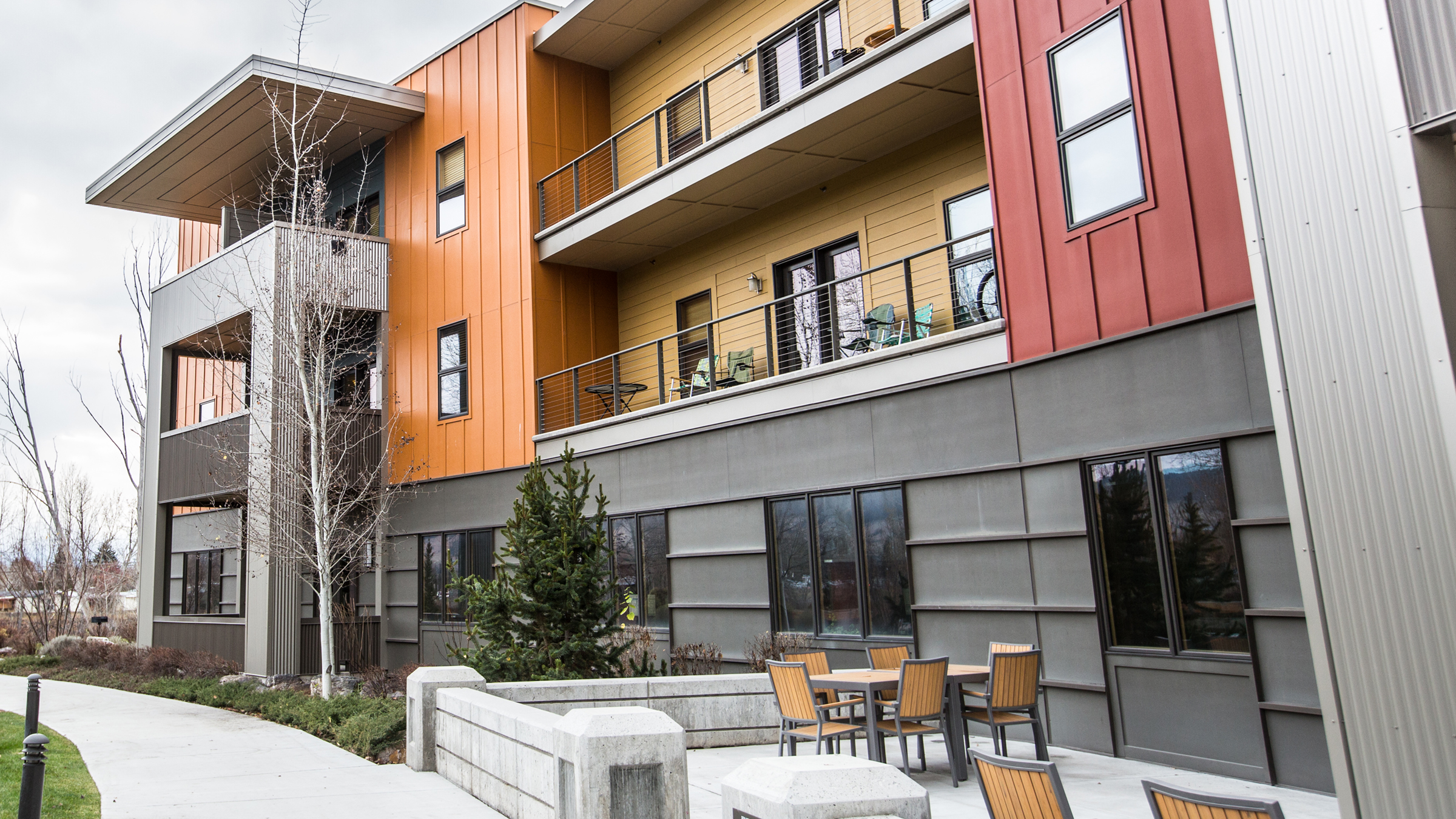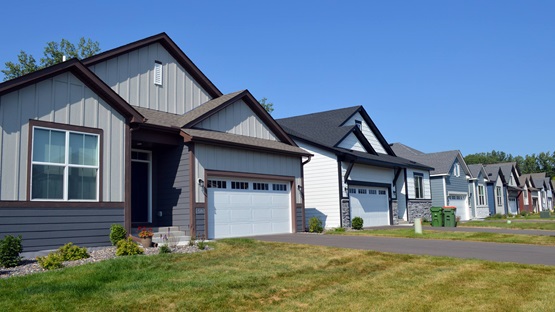In 2019, the city council in Bloomington, Minnesota, passed the Opportunity Housing Ordinance (OHO). Years of economic analysis, conversations with housing developers, and community input informed the policy’s design. The investment in research paid off for the city of 90,000 people, which is located just south of Minneapolis. Permits for market-rate and affordable housing production have rapidly increased.
The OHO is an example of inclusionary zoning, a class of policies that incentivize or require developers to build housing that rents or sells for below-market-rate prices. Such policies typically mandate that any new rental housing include units that are affordable to low- or moderate-income households.
Local market conditions and a city’s overall development environment heavily influence inclusionary zoning’s effects. Previous research on inclusionary zoning also suggests that the details of such policies matter for their success.
If they are to increase the overall supply of affordable units within a city, inclusionary zoning policies must balance affordable housing goals with the financial needs of developers. Affordability requirements reduce developers’ profits. Many inclusionary zoning policies offset these profit reductions by offering profit-increasing incentives. When affordability requirements become too costly relative to these counterbalancing incentives, inclusionary zoning policies can stifle new construction. The result can be higher numbers of affordable units within individual housing developments but an overall supply of housing—affordable and otherwise—that is lower than it might have been without any inclusionary zoning policy in place.
Cross-sector collaboration shaped OHO from the beginning
Eric Anthony Johnson is currently the CEO of Aeon, a large nonprofit affordable housing developer based in Minneapolis. He was Bloomington’s community development director when the OHO passed in 2019. Johnson told us that Bloomington’s city staff and policymakers sought to maintain the delicate balance between affordability provisions and pro-development incentives during the OHO’s creation.
Under Johnson’s direction, Bloomington commissioned a pair of feasibility studies that modeled theoretical development scenarios and examined the potential impacts of affordable housing requirements. These studies helped set a reasonable baseline for the nuts-and-bolts details of the OHO: What percentage of units could be affordable, how affordable should they be, and how much might these changes impact a developer’s profitability?
Then there was extensive engagement with key stakeholders. Johnson emphasized the importance of communication early in the policy-development process. He started calling developers directly, asking them what they might dislike about the OHO.
“They will tell you if you ask them,” Johnson said. “We also invited tenant organizations, neighborhood organizations. We countered every scenario raised by the private sector.”
As a result, the OHO passed with a type of support not always seen in local housing policy: there was “zero resistance” from the development community, Johnson said.
Through this engagement and research, the city also used the OHO to establish 16 different incentives to encourage development. Some offer partial relief or bonuses on regulatory factors. For example, the OHO offers incentives that allow developers to build an increased density of units with reduced parking and storage requirements, which generally increases the return on developers’ investments by allowing them to build more units on a piece of land. Other incentives the OHO offers are more directly fiscal in nature, such as reducing or deferring some development fees.
The city requires developers to set aside a minimum of 9 percent of all the units in a multifamily project for lower-income tenants. The OHO incentives become increasingly generous as developers increase the affordability or number of those units.
Based on our conversations with developers, the incentives have been important for making projects economically viable in Bloomington.
“The OHO incentives that made a real difference for our latest mixed-use project are parking reduction and storage reduction. Those are most heavily tied to reducing construction costs,” said Dave Higgins, vice president at McGough Development.
Indeed, every single housing development under the ordinance has utilized the reduction in minimum parking requirements, while 70 percent have utilized the storage-space reduction. On the financial side, nearly every project has also utilized some kind of support from the city.
This has enabled the construction of projects like McGough’s Carbon 31 development, a 403-unit mixed-use apartment building that broke ground in 2022. According to planning commission documents, baseline parking requirements called for 706 parking spaces in this development. But with the OHO’s incentives, McGough reduced its parking count to 622, providing a substantial cost reduction. The project also received redevelopment tax increment financing (TIF), as it was part of a larger planned redevelopment in Bloomington. In the context of housing, TIF can be used when new construction increases the assessed value of a property. With TIF, the increased property taxes that the city would normally collect on a newly constructed development can instead go to the developer to pay for certain construction-related expenses. Projects built under the OHO are eligible for TIF consideration by the city.
The Carbon 31 project’s amenities will include a pool patio, a fitness room, and proximity to light rail stops. And because of the OHO, it will also have 36 units that are affordable for households making 60 percent of the area median income (AMI).
City supports go beyond OHO incentives
The OHO provides more certainty in the development process, but it’s still a process: developers work with city staff to finalize the design of individual projects. City staff aim to provide stability, predictability, and efficiency for housing developers during the process, said Karla Henderson, the city’s current community development director.
“We’re pretty clear with developers that if you have a good project, we’re going to help you get through the process and get the shovel in the ground,” she said.
The developers we spoke with say the collaborative mindset that shaped the OHO also shows up in their other interactions with city staff. Because of Bloomington’s pro-housing planning reputation, developers are drawn to the city.
“I would say we’ve worked with 30 or so cities in the country, in the Midwest. Bloomington is the gold standard, just for the ability to get deals done—especially affordable housing, which is difficult,” said Chris Stokka, the vice president of MWF Properties, a developer and property manager primarily focused on affordable housing.
In 2022, MWF Properties opened the 81-unit Lyndale Flats, which is entirely affordable to households at 60 percent of AMI. In addition to benefiting from frequently utilized incentives in the OHO, such as parking reductions and the use of alternative exterior materials, Lyndale Flats had unique financing support from Bloomington’s Housing and Redevelopment Authority (HRA) that supplemented the project’s federal low-income housing tax credits.
“There weren’t enough funds to pursue the project as originally underwritten. We wouldn’t have been able to pursue it due to the costs exceeding [another subsidy program’s] allowable cap,” Stokka said. “So the HRA worked with us to reduce our overall costs in order to meet the requirements of the tax credit financing. For this project they donated land instead of giving us TIF, then established their own TIF district to pay themselves back.”
Bloomington’s pro-housing approach shows up in data on its housing production. Bloomington represents 2.8 percent of the Twin Cities metropolitan area’s population; the most recent data show that since 2019, Bloomington has produced 2.4 percent of total new metro-wide housing supply but 7.6 percent of affordable housing supply.
Furthermore, Bloomington has performed well at meeting its 10-year affordable housing production need, as projected in 2015 by the Metropolitan Council, a regional planning agency for the Twin Cities metro area. Well before 2030, Bloomington has already substantially surpassed its need for 51–80 percent AMI housing and nearly met its need for 50 percent AMI housing. One exception in Bloomington’s performance: the city is not on track to meet its 2030 need for producing “deeply affordable” units, or those that are affordable to families earning 30 percent or less of AMI.
Producing units affordable at 30 percent AMI has been challenging everywhere, said Tim Thompson, an attorney at the Housing Justice Center and a member of the advisory Bloomington Housing Action Team.
“This is a region-wide problem. We seem to be good at producing 60 percent [AMI units],” he said. “It’s a financial tradeoff—more units at 60 percent or fewer units with the same funds at 30 percent. We need a greater emphasis on 30 percent, even if it means fewer affordable units generally.”
OHO continues to evolve along with market
In 2021, Bloomington passed a set of OHO revisions. The changes were designed with an eye toward developers’ experiences with the law, and the shortfall of 30 percent AMI units.
“We’ve had tremendous success at 60 percent AMI, good success at 50 percent AMI, but less success at 30 percent AMI, which is not surprising,” said Glen Markegard, planning manager for the City of Bloomington. “So since then, we’ve tailored the incentives to focus even more on those lower-income bands.”
The primary change was to add further incentives for developers to build at a deeper level of affordability. Having more 30 percent AMI units in future housing projects remains a foremost goal for the city, Markegard said.
This effort also reflects a general intention to maintain the OHO as a “living” ordinance. Johnson, who describes himself as an early champion of the policy, acknowledges that because housing market conditions change, the ordinance will inevitably change too. If, for example, increased construction costs reduce developers’ ability to build, the ordinance may one day need to adjust its requirements. As a result, “the ordinance is designed to be open to change with economic conditions,” he said.
For now, overall housing growth in Bloomington remains strong, with substantial amounts of affordable units being created. Housing developers attest to Bloomington’s effectiveness as a partner. And locally, “the city council has a lot of political will on this issue, and there seems to be a lot of community support,” Markegard said.
As other jurisdictions in the Twin Cities area and elsewhere consider implementing inclusionary or mixed-income zoning policies, or refining their existing ones, Bloomington’s approach can offer lessons.
Cities need to find a “sweet spot” that balances the needs of developers with efforts to increase housing affordability, said Thompson. “Bloomington has an emphasis on flexibility and the wide range of tools that developers can choose. We all benefit from hearing about the results of that.”







